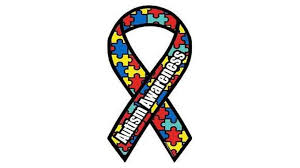
April is recognized as World Autism Awareness Month, a time to promote understanding, acceptance, and support for individuals with Autism Spectrum Disorder (ASD). Amidst the spectrum of activities and initiatives occurring this month, an essential focal point is the empowerment of students with disabilities—particularly through the avenue of eLearning.
Modern education systems are increasingly acknowledging the unique needs of students with ASD and other disabilities. Elearning, or electronic learning, has been critical in this journey, offering a plethora of advantages for learners who might find traditional classroom settings challenging. The adaptable nature of eLearning environments allows these students to learn at their own pace, in a place where they feel both comfortable and in control.
In recognition of World Autism Awareness Month, it is pertinent to highlight how eLearning has revolutionized education for students with disabilities. Here are key ways that digital learning promotes empowerment:
1. Personalization: eLearning platforms permit a range of customization options to suit various learning abilities and preferences. Content can be tailored to individual skills or interest areas, making learning more engaging for students with special educational needs.
2. Flexibility: Unlike scheduled school classes, eLearning generally offers the flexibility needed by many students with ASD to learn at times when they are most receptive and comfortable. This also supports them in managing other therapies or activities crucial to their well-being.
3. Consistency: The structure of eLearning courses can provide a routine that is calming for autistic learners. Digital platforms often maintain a consistent layout and mode of operation which helps minimize anxiety associated with change.
4. Multimodal Learning: eLearning resources typically encompass audio, text, imagery, and interactive activities — catering to different learning styles and sensory sensitivities.
5. Safe Social Interaction: Online classes afford an environment for controlled social interaction. Students with autism can engage with peers virtually, potentially reducing the sensory overload that can accompany face-to-face contact.
6. Skills Development: Interactive eLearning tools help hone life skills through simulations and gamified learning experiences which can be valuable for students on the autism spectrum.
During World Autism Awareness Month, acknowledging the role of technology as a tool for empowerment illuminates how education can evolve to be more inclusive. With educational technology’s adaptability to distinct needs, eLearning stands as a beacon of hope – breaking down barriers and crafting avenues for accessible and efficient learning experiences.
In conclusion, celebrating World Autism Awareness Month isn’t just about recognizing individuals with autism; it’s also about taking meaningful strides to integrate innovative solutions like eLearning into their daily lives. By doing so, we ensure that education is not just available but also enabling—allowing every student to reach their full potential regardless of their disabilities.
